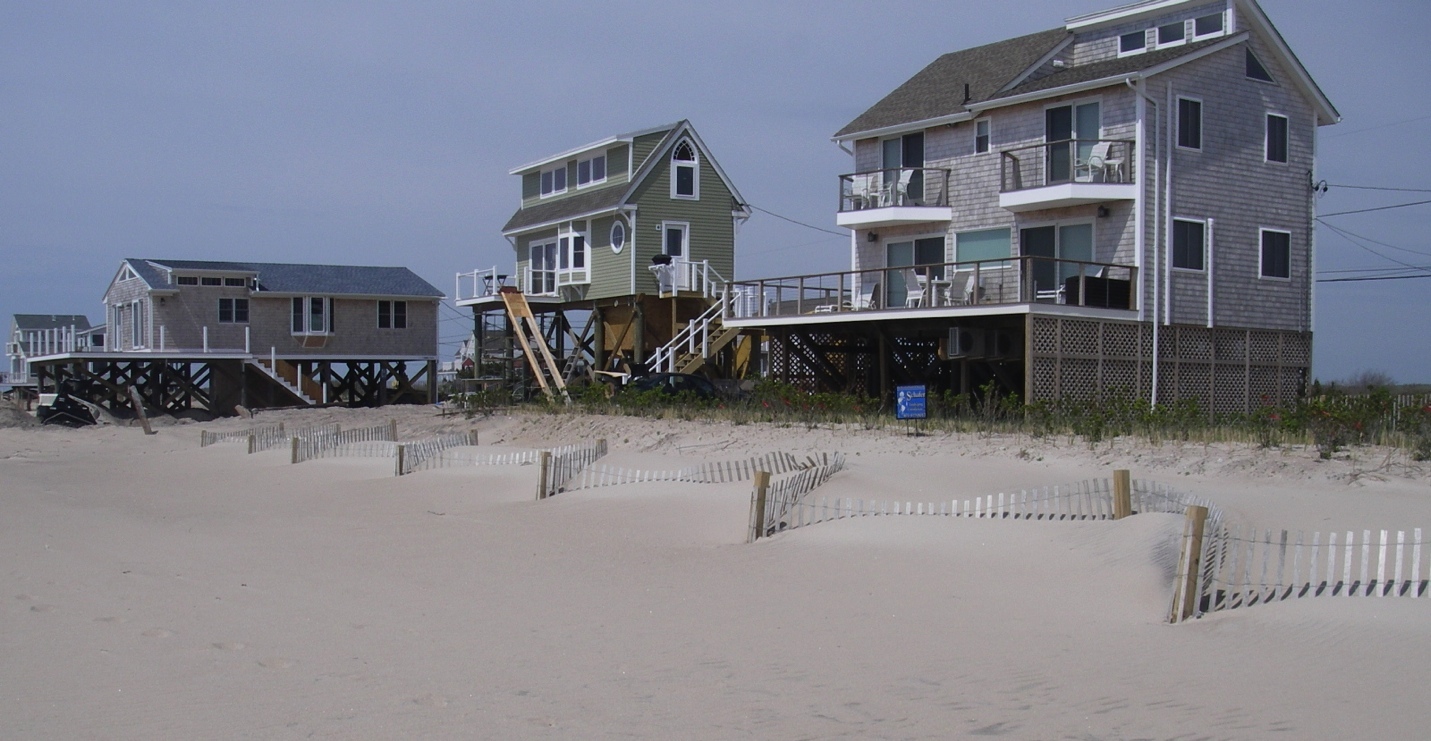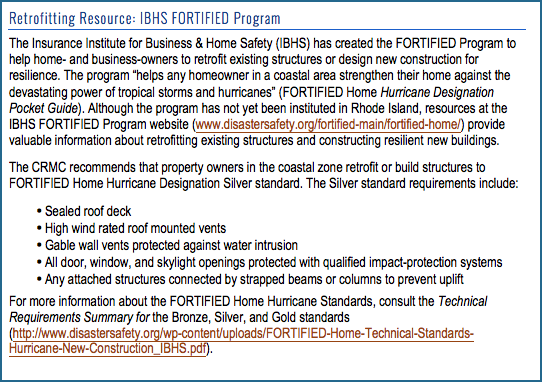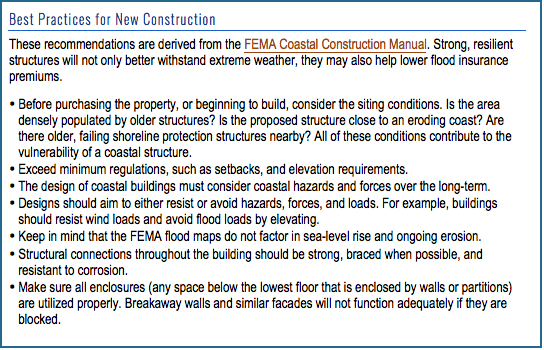
RI Coastal Resources Management Council
...to preserve, protect, develop, and restore coastal resources for all Rhode Islanders

...to preserve, protect, develop, and restore coastal resources for all Rhode Islanders
Retrofitting & Repairing an Existing Building
If the existing building is especially vulnerable to coastal hazards or does not meet the most recent standards for building in the coastal zone (Question 8: How do I determine if the buildings on the property meet the current design and construction standards for the flood zone?), it may be possible to retrofit the structure to increase resiliency. If a structure requires repairs following a coastal storm or flood event, it is recommended that owners incorporate resilience measures in the renovation process.
RECOMMENDATION FOR BUYERS: If you intend to update or otherwise alter an existing structure, develop a plan to renovate or retrofit before buying. Weigh costs of improvements against flood insurance premiums, risk, and vulnerability. Buyers can obtain elevation certificates based on a proposed project in order to get flood insurance estimates for the renovated structure.

Elevated homes in Westerly, R.I. The green house (center) has been elevated to 5 feet above the base flood elevation.

New Construction in the Coastal Zone
In addition to adhering to local building codes, new development in the coastal zone must meet specific criteria in regards to flood resistant and load-bearing construction as per the CRMC and the NFIP. The loads that need to be considered for coastal construction are wind loads, flood loads, breaking wave loads, and debris-impact loads.
Flood-provisions in the state’s building code address elevation regulations, siting practices, the use of flood-resistant materials, and other design requirements for residential and commercial buildings in flood-prone areas. For information about Rhode Island’s current building codes and standards, please visit the state’s Building Code Commission website.

Find out more: For more information about building in the SFHA, please see Section 300.3, Part G – Guidelines for Construction in Flood Hazard Zones in the R.I. CRMC regulations.
For additional information about retrofitting, rebuilding, and constructing in the coastal zone, please consult the following resources: